PROTECT is a research project with 27 beneficiaries from EU member states, with associated countries and third countries involvement. We expect that more than 200 senior and early-career scientists will be actively involved during the four-year course of the project. PROTECT is coordinated by the Institute for Geoscience and Environmental research (IGE) of the French National Center for Scientific Research (CNRS).
Visualize where all the PROTECT participants are on the PROTECT network of friends and collaborators.
The project is coordinated by the Project Office:

Gaël Durand, project coordinator (IGE CNRS)
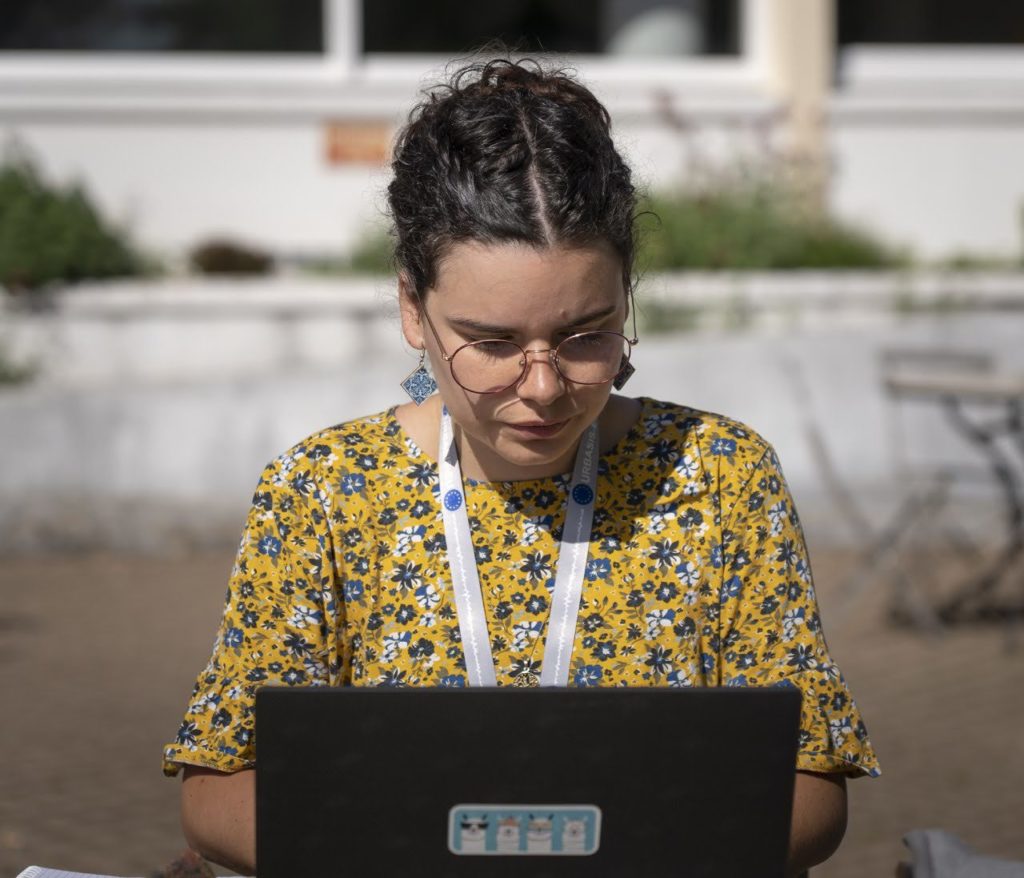
Na’Omi Chapalain, project manager (IGE CNRS)
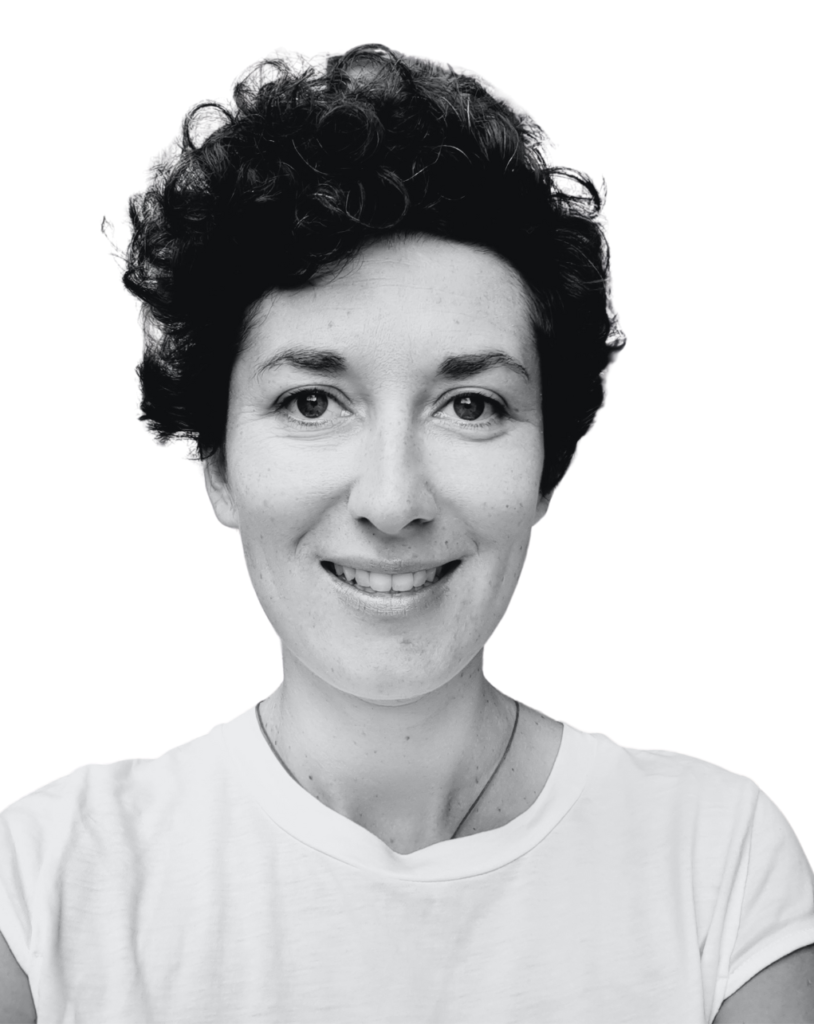
Anne Chapuis, communication officer (IGE CNRS)
The Scientific Steering Committee ensures timely and successful execution of all PROTECT work package tasks. It is composed of:
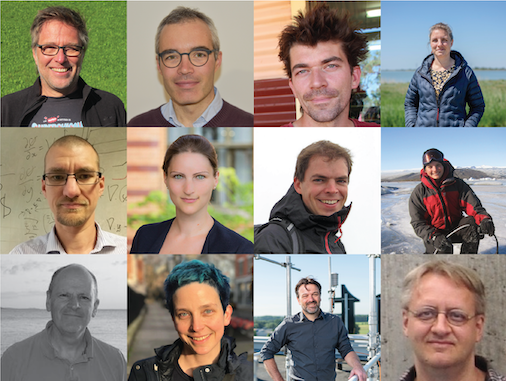
WP2: Tamsin Edwards and Gonéri Le Cozannet
WP3: Paul Holland and Frank Pattyn
WP4: Ricarda Winkelmann and Nicolas Jourdain
WP5: Ruth Mottram and Michiel van den Broeke
WP6: Ben Marzeion and Frank Paul
WP7: Aimée Slangen and Robert Nicholls
Clustering activities ISMIP6, ISMASS and INSTANT: Heiko Goelzer
Below is a description of the 27 beneficiaries of PROTECT.
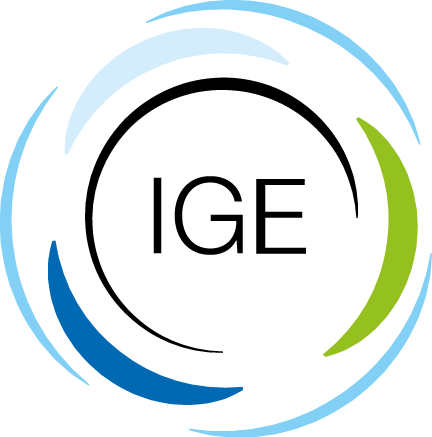
The French National Centre for Scientific Research (CNRS)
The French National Centre for Scientific Research (CNRS) is a government-funded research organization, under the administrative authority of France’s Ministry of Research. CNRS is represented in PROTECT by the Institut des Géosciences de l’Environnement (IGE). IGE, is a public research laboratory in Earth and Environmental Sciences, created on 1 January 2017 by merging LGGE (Laboratory of Glaciology and Geophysics of the Environment) and LTHE (Laboratory of Transfers in Hydrology and Environment). IGE conducts research on climate, the water cycle, cryosphere and natural and anthropized environments with the aims to better understand the processes that govern the various geophysical compartments (ocean, atmosphere physics and chemistry, cryosphere, watersheds, critical zone), their interactions and responses to human pressures, and the processes of adaptation and resilience of societies. In direct relation to PROTECT activities, IGE is pivotal in the development and maintenance of the open-source numerical ice sheet model Elmer/Ice, which in PROTECT is applied to the AIS and GrIS. As research contributor, CNRS-IGE is involved in PROTECT WP-1, 3, 4, 5 and 8. CNRS-ICE coordinates PROTECT and operates the Project Office, including the Project Manager and Data and Communication Officers.

Universität Bremen (UBREMEN)
The University of Bremen is a medium-sized German university with around 20,000 students and 2,500 academics, among them 270 professors. The University of Bremen is represented in PROTECT by the Institute of Geography and the Center for Marine Environmental Sciences (MARUM). The Institute of Geography covers a broad academic spectrum ranging from climate research to urban geography. The activities in PROTECT WP-6 are at the center of the group’s research interest. With affiliations both to the Institute of Geography and MARUM, the Glaciology Group is among the internationally leading groups in modelling mountain glaciers and ice caps on the global scale, estimating their past and future contribution to SLR, and their impact on seasonal water availability. Most notable are the group’s contributions to the IPCC AR5 and SROCC reports, the co-leadership of the Glacier Model Intercomparison Project, and the leading role in developing the Open Global Glacier Model.
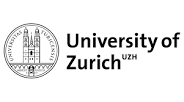
Universität Zürich (UZH)
With its 26,000 enrolled students, the University of Zurich (UZH) is Switzerland’s largest university. The Department of Geography of the University of Zurich (GIUZ) is the largest one in Switzerland with 200 staff and research and teaching activities on a wide range of topics. The 3G unit within the physical geography division at GIUZ will contribute to PROTECT WP-6; it has renowned high competence in cryospheric monitoring and modelling at local to global scales. The unit has a long tradition in applied optical remote sensing of glaciers in high-mountain topography and was prime contractor of the ESA GlobGlacier and Glaciers_cci projects. Methods for automated mapping of glaciers from optical satellite data and creation of topographic glacier inventory data have been developed here and are now well-established quasi-standards with worldwide application.

Royal Netherlands Institute for Sea Research (NIOZ)
The Royal Netherlands Institute for Sea Research (NIOZ) is the national oceanographic institute in the Netherlands. It is part of NWO-I, the Institutes Organisation of the Dutch Research Council NWO. NWO-NIOZ principally performs academically excellent multidisciplinary fundamental and frontier applied marine research addressing important scientific and societal questions pertinent to the functioning of oceans and seas. NIOZ contributes to PROTECT WP-2 and leads WP-7 through its Sea Level Centre, a centre of expertise that reaches across all departments of NIOZ, facilitating research and collaboration across a wide range of topics around sea-level change. One of the main tasks of PROTECT is to generate regional sea-level projections, which is what this centre specializes in; as such PROTECT WP-7 is at the core of NIOZ activities, and its contributions considered a vital part of the PROTECT consortium.

United Kingdom Research an Innovation (UKRI-BAS)
The British Antarctic Survey (UKRI-BAS) is a component of the Natural Environment Research Council (NERC). NERC is part of the United Kingdom Research and Innovation (UKRI). BAS has, for over 60 years, undertaken much of Britain’s scientific research in- and around the Antarctic and Arctic regions, building a reputation as a world-renowned polar science and logistical centre. BAS has been active in researching ice/ocean interactions for over 30 years. UKRI-BAS will co-lead for WP-3. Within WP-3, UKRI-BAS will co-design the ice damage model intercomparison, lead research into the parameterisation of ocean processes beneath ice shelves, concentrating on processes that are finer than the ocean model grid of a coupled model, but resolvable on the ice model grid. Within WP-4, Holland, URI-BAS will lead research using coupled ice/ocean models. Historical decadal variability in ice/ocean processes and attribution of anthropogenic influences will be examined in the Amundsen Sea using the WAVI/MITgcm regional coupled model, while future projections to 2100 will be conducted using the NEMO/BISICLES coupled model.

Global Climate Forum (GCF)
The Global Climate Forum (GCF) is a not-for-profit research institute that performs stakeholder-based research on climate change and related global challenges. The GCF has led or been involved in projects developing and carrying out integrated impact and adaptation assessments at the global scale, as well as, in many countries around the world. GCF contributes to the impact modelling activities in PROTECT WP-7 with its world-leading expertise on the economics of coastal impacts and adaptation. GCF also contributes in PROTECT WP-2 with its rich experiences in stakeholder-based science, specifically through leading Task 2.1 on stakeholder involvement and decision context as well as the Maldives case study.

Bureau de Recherches Géologiques et Minières (BRGM)
BRGM (the French Geological Survey) is a French public research institute in the area of Earth Sciences, under the administrative authority of the Ministries of Research, the Ministry in charge of Environment and the Ministry of Economy and Finances. With about 1000 employees, BRGM provides R&D and expertise for public policies and citizen information in different fields of the Earth Sciences: risks and land use planning, groundwater management, geology and circular economy, as well as data and services infrastructures.The Coastal Risks and Climate Change unit, which will contribute to PROTECT, is part of the Risk and Prevention Division. It includes 20 research engineers with expertise in observing coastal changes, modelling coastal processes, hazards and risks and projecting coastal impacts in the context of social and climate changes and sea-level rise. Within PROTECT, BRGM will coordinate WP-2, on co-designing and co-producing sea level projections and coastal climate services, T-2.3 on case studies, T-2.4 on synthesis, transfer, dissemination and web interface. BRGM will also contribute to T-7.1 and T-7.2 on global and regional sea-level projections.

Potsdam Institute für Klimafolgenforschung (PIK)
The Potsdam Institute for Climate Impact Research (PIK), founded in 1992, is a non-profit research institute addressing crucial scientific questions in the fields of global change, climate impacts and sustainable development. In PROTECT, PIK will be actively involved in conducting numerical model simulations with the Parallel Ice Sheet Model (PISM) for tasks T-4.3.1 and T-4.3.2as well as T-5.3.1 to investigate the future sea-level contribution of the AIS, in particular on longer timescales. PIK researchers are part of the core developer team of the open-source ice flow model PISM-PIK which is used by a growing community of research groups worldwide. PIK co-leads WP-4 (Contribution of the AIS to SLR). and will actively engage in the PROTECT communication and dissemination activities.
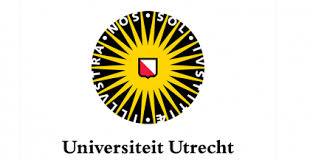
Universiteit Utrecht (UU)
Founded in 1636, Utrecht University (UU) is an esteemed international research university, offering a wide range of research within all major research disciplines. In PROTECT, UU is represented by the Institute for Marine and Atmospheric research Utrecht (IMAU); the institute was established in 1991 and is internationally recognized for its basic research on the oceans, atmosphere and cryosphere. IMAU contributes to PROTECT WP3, 4, 5 and 7 through its Ice and Climate research group, which is active in SLR research (extremes and impacts), remote sensing of the cryosphere, runs automatic weather stations on both the GrIS and AIS, runs the earth system model CESM and develops and runs the regional climate model RACMO2, the associated firn model IMAU-FDM and the ice sheet model IMAUICE which are all applied to both ice sheets. Group members have long-standing experience in the production and dissemination of model results, and have contributed to all major IPCC assessments, as lead and contributing authors.

Université Libre de Bruxelles (ULB)
Founded in 1834, Université libre de Bruxelles has a long tradition of excellence in Research with four scientific Nobel Prizes, two Nobel Peace Prizes, one Fields Medal, three Wolf Prizes and two Marie Curie Excellence Awards. It is one of the largest and best Research Universities in Belgium. In PROTECT, ULB will co-lead WP-3 and further contribute to WP-4 through the Laboratoire de Glaciologie of the Department of Geosciences, Environment and Society of the Faculty of Sciences. This research group has a long-standing (more than 40 years) expertise in ice-flow dynamics through ice-core analysis, ice-flow modelling and ice geophysics, and participated in FP5, FP6, FP7, and H2020 projects, and will address fundamental properties of ice flow and calving of the AIS.
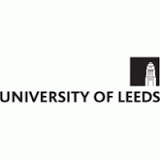
University of Leeds (ULEEDS)
The University of Leeds is one of the largest Universities in the UK with over 32,000 full-time students, 7,500 staff and an annual turnover of €545 million. It is among the top ten universities for research in the UK with some 3,000 full-time researchers and an annual research income of more than €120 million, of which ~10% is from EU awards. The University is the national leader in receipt of NERC funding for the last two years and has gained a number of inter-disciplinary awards spanning the natural and social science dimensions of environmental research. The University of Leeds has wide experience in the field of Earth Observation, including development of satellite retrieval algorithms, satellite data processing systems, and satellite sensor systems, and in the application of satellite observations for geophysical research. Example projects in the field of satellite retrievals include development of novel retrieval algorithms to measure glacier topography using the Interferometric mode of the CryoSat-2 Synthetic Aperture Radar (SAR) altimeter, and developing the use of multiple aperture Interferometric SAR (InSAR) for the study of glacier velocities, developing the use of InSAR for measuring tectonic and volcanic deformation, and developing retrievals for the chemistry of the global stratosphere and troposphere. The University of Leeds has been involved in the development of the CryoSat-2 and Premier missions, and in developing concepts for other satellite missions (e.g. SuperSAR). It has been involved in numerous high profile studies applying satellite data to solve geophysical problems, including studies of the Earth’s ice cover, Earth surface deformation, and of atmospheric chemistry.

University of Bristol (UBRIS)
The University of Bristol is one of the most prestigious universities in the UK. It is a thriving international community combining excellence in research and innovation with a vibrant entrepreneurial culture. Research is at the heart of the University’s mission and accounts for its international reputation. The University organizes its academic affairs across six faculties: Engineering, Science, Health, Biomedical Sciences, Social Sciences and Law, and Arts. In the 2014 UK Research Excellence Framework, over 98% of research at the University was deemed to be of an international standard. Over 83% of the research assessed was awarded either the top 4* rating, defined as ‘world leading’, or the 3* rating, ‘internationally excellent’. As a result, in 2015-16 the University was allocated the 8th highest share of government research funding in England. The University participates in hundreds of international collaborations both within and outside of Europe and attracts research funding from organisations around the world.

Danish Meteorological Institute (DMI)
The Danish Meteorological Institute (DMI) is the official weather service and climate advisor to the Danish Government with significant operations across the Kingdom of Denmark including Greenland and the Faroe Islands. DMI has responsibility for weather forecasts, sea ice charts around Greenland as well as ocean conditions and weather warnings. The institute includes an active research and development department employing around 60 staff working on topics ranging from meteorology to sea ice and ocean modelling and remote sensing, stratosphere dynamics, radar, numerical weather prediction model development and global and regional climate modelling including the development of the Danish National Climate Atlas, for adaptation to future sea rise and other climate extremes. DMI have developed a coherent and well-respected research group dubbed “world-leading” in a recent international review of research activities at the institute. The climate research group have pioneered coupled ESM-ice sheet modelling within the EC-Earth consortium and have developed a sophisticated surface mass balance model including firn parameterisations based on the in-house HIRHAM5 regional climate model. Their experience with Greenland ice sheet processes as well as Arctic and global climate means that DMI is an excellent addition to the consortium.

Vrije Universiteit Brussel (VUB)
The Vrije Universiteit Brussel is a dynamic and modern university with two green campuses in the Brussels-Capital region, Belgium. It offers high-quality education to more than 16,000 students and harbours internationally recognized research teams in many disciplines of fundamental and applied research. It is one of the biggest centres of knowledge in the capital of Europe, with an academic staff of nearly 2,300 persons, of which 800 professors. Glaciological research at the VUB is carried out in the Department of Geography, which resides under the umbrella of the interdisciplinary research unit Earth System Science, which group unites more than 100 scientists working on the global evolution of the planet. The ‘Ice and Climate’ research group, which represents VUB in PROTECT, consists of 10 persons and concentrates on the dynamics of natural ice masses and their interaction with the climatic system. Emphasis is laid on 3D modelling of the continental cryosphere (ice sheets of Antarctica, Greenland, Quaternary ice sheets) and mountain glacier research, involving radar sounding, mass balance observations, GPS measurements, and modeling. Time scales of interest range from ice sheet inception to glacial-interglacial cycles, and the response to future greenhouse warming. Amongst other things, three-dimensional models of the Antarctic and Greenland ice sheets have contributed to assess the sea-level contributions of the polar ice sheets for subsequent Scientific Assessment Reports of IPCC since the SAR. The glaciological research of the Ice and Climate group is well embedded in international research programmes focusing on model intercomparison (ISMIP6/CMIP6), paleo sea level reconstructions (PALSEA), and data evaluation for model initialisation (ESA, Copernicus Climate Services).

Université de Liege (ULIEGE)
ULiège is a research-active public university institution in the French-speaking region of Belgium, with 3,300 lecturers and researchers and over 22,000 students. Liège has had more than 100 projects granted through FP7 and H2020. Finally, ULiège has received an ‘HR excellence in Research’ award from the EC. ULiège is represented in PROTECT by the Laboratory of Climatology from the Department of Geography included in the interdisciplinary ‘SPHERES’ Earth Sciences research unit which consists of 140 members across 4 departments. The research carried out at the Laboratory of Climatology from ULiège are mainly based on the MAR regional climate model that we are developing and that we (i.e. 1 staff member, 4 post-docs and 4 PhD students) are using in particular for studying the Polar Regions, i.e. the current (since 1850) and future (until 2200) evolution of the climate and surface mass balance (SMB) of the main ice sheets/caps (Greenland, Antarctica, Svalbard, Arctic Canada). In these regions, MAR is internationally recognized as one of the best regional models currently available for performing SMB estimation and our projections of sea level rises from melting ice caps (e.g. for the IPCC) are the reference in this field (10 papers in Nature / Science, two PNAS, 30 The Cryosphere, in total 70 papers about this topic over the last 5 years). MAR is also used to assess the real-time state of the Greenland ice sheet surface mass balance by running it in forecast mode. In PARAMOUR, MAR is coupled the regional ocean model NEMO to study the interaction at high spatio-temporal resolution between atmosphere and ocean in the polar regions (Greenland and Antarctica).

King’s College London (KCL)
King’s College London is ranked as one of the top 25 universities in the world in the global QS rankings. It has an outstanding reputation for world-class teaching and cutting-edge research. In the 2014 Research Excellence Framework King’s College London was ranked 6th nationally in the ‘power’ ranking, which takes into account both the quality and quantity of research activity, and 7th for quality. KCL has some 6,800 staff and more than 27,600 students from 150 countries worldwide.
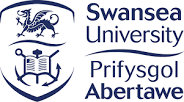
Swansea University (USWANSEA)
Swansea University, UK, is a research-led university established in 1920. It is ranked within the UK top 30 research universities and over 90% of its research has been classed as world-leading or internationally excellent for the difference it makes in society. Swansea University is represented in PROTECT by the Glaciology Group, based in the Department of Geography, College of Science. Our research combines world-leading expertise in computer simulation, satellite remote sensing, and geophysical and geological field methods in the Arctic and Antarctic. The group is particularly noted for advancing the understanding of near future SLR, ice shelf and ice stream dynamics, glacier surging, ice stream dynamics and solid earth interactions in Antarctica, Greenland, and Svalbard. It will apply these techniques in PROTECT WP-4 on stability of the AIS, especially on short-term simulation of the Amundsen Sea in T-4.1. The Swansea Glaciology Group is affiliated with the UK Centre for Polar Observation and Modelling (CPOM), a NERC Centre of Excellence that studies processes in the Earth’s polar latitudes that can affect the Earth’s albedo, polar atmosphere and ocean circulation, and global sea level. CPOM uses theoretical and laboratory-derived information to form new models of interactions between the ice, ocean and atmosphere, and uses ground and satellite observations to test these and other climate models.
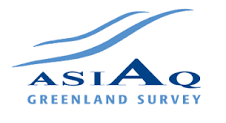
Asiaq Misissueqqaarnerit (ASIAQ)
Asiaq is a Nuuk based, Greenland government owned company whom, in addition to the official budget and tasks, undertakes commercial and research activities. Asiaq is responsible for the mapping of towns and settlements, and has extensive monitoring, research and commercial activities within climate, hydrology, cryosphere and the environment. Being locally based, Asiaq has close ties to relevant stakeholders in Greenland including authorities, agencies, companies (e.g., shipping organisations) concerned with sea-level changes and the effects of glacier melting. Asiaq deploys its activities in PROTECT WP-2 where our local presence in Greenland and close ties to relevant stakeholders will be key to identifying, contacting and liaising with potential stakeholders. Asiaq is also a partner in PROTECT WP-5 where our long term observational time series of climate, hydrology and cryosphere in Godhåbsfjord, and around Greenland, will be key to assessing the model results.

Federal Institute of Technology (ETHZ)
The Federal Institute of Technology ETH Zurich was founded in 1855 and has more than 20,000 enrolled students. According to the 2019 QS World University Rankings, ETHZ ranks second in Europe, and is one of the six leading universities worldwide. ETHZ offers a wide variety of Bachelor’s, Master’s and PhD programs. The Laboratory of Hydraulics, Hydrology and Glaciology (VAW) has about 60 employees and conducts research and teaching in the fields of river engineering, glaciology, hydraulic engineering and numerical modelling. Studies in the areas of hydraulic structures for energy production, irrigation and water supply, protection against natural hazards (flood protection, debris flow, glacial risks, impulse waves) are complemented by research and services in the areas of dynamics of polar ice streams and glaciers, as well as processes related to glaciers and climate change. The Swiss glacier monitoring network (GLAMOS) is hosted at VAW-ETHZ and is responsible for an up-to-date assessment of the state of Alpine glaciers. The Glaciology group within VAW is jointly affiliated to the Swiss Federal Institute for Forest, Snow and Landscape Research WSL and has built up long-standing and world-renowned expertise in the monitoring and modelling of mountain glaciers from the local to the global scale. They will apply this expertise in PROTECT WP-6 to assess the contemporary and future contribution of the world’s glaciers to SLR.

University of Northumbria at Newcastle (UNN)
The University of Northumbria at Newcastle (UNN) has existed as a college since 1892 and today it is the 6th biggest University in the UK. Currently, Northumbria University has 38,000 students from 135 countries and 3,000 staff and located in the central part of Newcastle upon Tyne. The University has branches at partner institutions in Asia and Europe. The University comprises of four academic Faculties including the Faculty of Engineering and Environment and the Faculty of Health and Life Sciences. In the latest UK Research Excellence Framework (2014) – a national research assessment exercise based on peer review of publications, impacts and awards data – research was judged to be “internationally excellent” or “world leading” in all disciplinary areas in which UNN submitted. UNN is dedicated to supporting the career development of all researchers, as evidenced by the European Commission HR Excellence in Research status it has held since 2013. The University has substantial experience as partner or coordinator in international funded research projects, including over 30 EU Framework Programme projects between FP5 and FP7, Marie Curie Actions, Cost Actions, TEMPUS, Erasmus Mundus programmes, and the European Social Fund and European Regional Development Fund as well as large national and regional R&D programmes to support businesses. Northumbria University is strongly committed to gender equality, which has been recognised through an Athena SWAN Bronze Award (2015). This nationally recognised accreditation scheme demonstrates the University’s commitment to promote gender equality in science, engineering and technology through policies, practices and organisational culture.

Danmarks Tekniske Universitet (DTU)
DTU is the major Technical University of Denmark, with more than 10,300 students and a staff of 5,400, spanning a wide range of technical and natural sciences. The National Space Institute (DTU-Space) is a special institute focusing on the use of space for basic science and technology, earth observation and geodesy. DTU-Space carries out and coordinates major tasks related to the Danish membership of the European Space Agency, as well as provide advice to both Danish and international government agencies on a wide range of space or geodetic applications. DTU Space has a long tradition of monitoring the Greenland ice sheet form Space and providing relevant EO-data, as well as carrying out in-situ and airborne research and monitoring projects. Via our contribution in PROTECT will provide a unique opportunity for tailoring the EO-data output directly to a specific need in the modeling effort, by working in close collaboration with the modeling community to ensure the EO-data needs are met both temporal and spatially, and are consistent across the different types of change data (elevation, mass and velocity changes). Special efforts will be done to integrate novel data from the new NASA IceSat-2 and GRACE-FO missions into unified optimal products. To understand rapid dynamic changes in the major ice streams, repeated space imagery (primarily Sentinel-2) of supraglacial lake drainages will also be used to correlate with observed rapid changes in ice velocities and elevations, as well as changes in iceberg production.

Alfred Wegener Institute (AWI)
The Alfred Wegener Institute, Helmholtz Centre for Polar and Marine Research (AWI), with 1,175 employees and an annual funding of about 130 M€, is one of the largest research centers in polar and marine research worldwide, and one of the very few scientific institutions with year-round research activities in both the Arctic and the Antarctic. The AWI coordinates the German polar research infrastructure, while overseeing and providing access to all cryosphere components, including permafrost, ice sheets, sea ice and ice-covered ocean basins, and the polar atmosphere. The combination of field observations and ecological long-term time series, with seafloor and ice archives, and climate modeling to assess Earth system variability in past, present and future, is unique for a polar and coastal research center. The AWI is embedded in a number of European Research initiatives, such as the European Polar Board (EPB), the European Marine Board (EMB), and the European Climate Research Alliance (ECRA). It also contributes to a variety of international research programmes and projects, including the Integrated Ocean Drilling Programme (IODP), North Greenland Eemian Ice Drilling (NEEM), and the Filchner Ice Shelf Project (FISP).

Ministry of Housing and Environment (ME)
The Ministry of Environment established under President decree, is responsible for implementing government policies, regulations, programmes and projects related to the provision of clean water and appropriate sewerage services, provision of clean and affordable energy services, provision of clean and healthy environment free from pollution, protection of the islands from coastal erosion, advocate for the rights of small islands states in the fight against climate change, mobilize finance to adapt and mitigate the negative impacts of climate change, coordinating sustainable development goals within the government, and protection and preservation of natural environment. The following government agencies are affiliated and function under the direct supervision of the Ministry: Environment Protection Agency (EPA), Maldives Meteorological Service (MMS), Maldives Energy Authority (MEA), UNESCO Baa Atoll Biosphere Reserve Office (BR Office), Baa Atoll Conservation Fund.

Delft University of Technology (TUD)
With 21,000 students and an academic staff of 3,000, TU Delft (founded 1842) is the largest technical university in the Netherlands. The University’s research results annually in about 350 PhD theses and nearly 6,000 journal publications, conferences papers or books. The Department of Geoscience & Remote Sensing (GRS) is a department of the Faculty of Civil Engineering and Geoscience dedicated to the development and exploitation of science and engineering techniques for measuring, monitoring and modelling the Earth’s environment. It employs ~30 scientific staff members and more than 50 PhD students and postdocs, focusing on the use of remote sensing and modelling techniques to study the Earth in research domains ranging from atmospheric science, to earth system science, geodetic data science and remote sensing science. GRS organizes an MSc track Geoscience and Remote Sensing and is closely involved in the MSc track Environmental Engineering, which both attract more than 30 new students each year. Within this broad range of activities GRS has a strong track record on monitoring and modelling of cryosphere and lithosphere with several staff members working on topics ranging from monitoring of (sub-)surface conditions of Greenland/Antarctica to glacial isostatic adjustment.

Royal Netherlands Meteorological Institute (KNMI)
The Royal Netherlands Meteorological Institute (KNMI) is the Dutch national weather service. Primary tasks of KNMI are weather forecasting and monitoring of weather, climate, air quality and seismic activity. KNMI is also the national research and information centre for meteorology, climate, air quality, and seismology. KNMI advises on and warns society to reduce risks in the field of weather, climate and seismology and to limit damage and injuries. With high-quality knowledge and technology plus an extensive observation network, KNMI offers products and services that contribute to the safety, accessibility, sustainability and prosperity of the Netherlands. As a scientific institute KNMI participates in the international research community and contributes, for example, to the process and reports of the Intergovernmental Panel on Climate Change (IPPC).

University of East Anglia (UEA)
The University of East Anglia (UEA) comprises four Faculties (Science, Medicine & Health Sciences, Social Sciences, and Arts & Humanities), and 19 Schools of study. It currently has around 15,000 students, of which around 4,000 are postgraduate students.Over the last 50 years, UEA has prided itself on its interdisciplinary ethos and its ability to shape new disciplines that respond to the grand challenges facing the world. Ithas led the way in shaping disciplines such as environmental sciences, international development studies and creative writing. UEA has now firmly established itself in the top 15 of UK universities, and is aiming to continue that upward trajectory. The University achieved placings of 14th in the Complete University Guide 2019 and 15th in the Times and Sunday Times Good University Guide 2019. In relation to Horizon 2020 (post 2014), UEA is presently leading 13 projects worth a total of €19.5m and it has around 41 ‘live’ research projects running with the European Commission, with a value of more than €28m.

NORCE Norwegian Research Center
NORCE Norwegian Research Centre AS (NORCE) was established in 2017 through a merger of the Norwegian research institutes Agderforskning AS, Uni Research AS, Teknova AS, International Research Institute of Stavanger AS and Christian Michelsen Research AS. NORCE has about 800 employees with an annual turnover of 1 billion NOK. The head office is in Bergen, Norway with branch offices in Stavanger, Kristiansand, Grimstad and Oslo. NORCE is a leading research institute with focus on research and innovation within climate, energy, health, environment, society and technology. NORCE runs its climate research through the department NORCE Climate and Environment with particular strengths in understanding climate dynamics across multiple spatial and temporal scales, dynamical modelling of the climate system and understanding past-future climate variability and change. The department has extensive experience coordinating and leading and contributing to large national and international projects (e.g. Norwegian Earth System Modelling Infrastructure project (INES), Ice2Ice Synergy Grant, and Ocean Thematic Centre of the ICOS ERIC). NORCE is one of four partners in the Bjerknes Centre for Climate Research (BCCR) and a partner in the Norwegian Climate Service Centre. NORCE has a leading role in Norway for the use and further development of the Norwegian Earth System Model (NorESM), with expertise in global climate, atmosphere, ocean and ice sheet modelling, decadal prediction, regional downscaling and climate dynamics. It plays an instrumental role in delivering future Earth system model projections with NorESM to the CMIP6 project assessed in the last IPCC-AR6. NORCE is mainly involved in PROTECT WP-5.
PROTECT is collaborating with different partners:
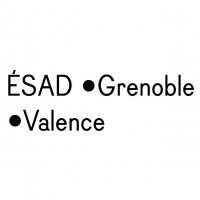
L’École Supérieure d’Art et Design •Grenoble •Valence, or the Higher School of Art and Design in Grenoble and Valence, France, (ÉSAD), is PROTECT’s partner school for WP8.
ÉSAD is an internationally recognized university-level visual arts school based in France’s Alpine and Rhône valley region delivering bachelor’s and master’s degrees in art and graphic design. It engages in research via its two research units in art and graphic design that interact with the pedagogy and through jointly supervised theses with university partners. ÉSAD is a partner school of Université Grenoble-Alpes.
Learning and research, both practice and theory, is project-based and experimental.
ESAD wishes to commit in multiple ways to taking on issues related to climate change and the ecological turn that is in motion.
ÉSAD’s team and students look forward to working with the scientists of PROTECT!

White Fox Pictures is an award winning French production company specialized in discoveries content, including Science, Nature and History. The company is creating inspiring content for a wide range of International partners, including the TV Industry (for instance BBC, NAT GEO, FRANCE TV) but also directly private and public organizations (like WWF, CNRS, Chateau de Versailles, etc.).
